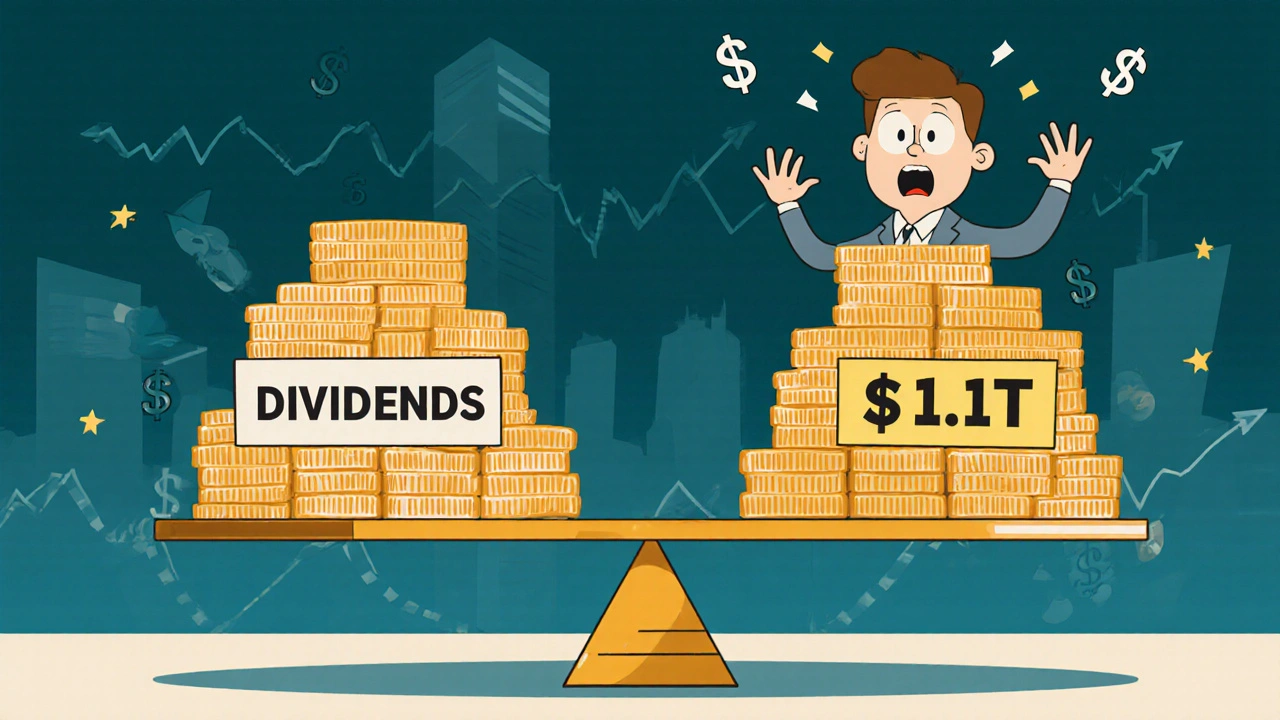Shareholder Yield: How Companies Return Cash to Investors
When you own a stock, you’re not just betting on price growth—you’re also counting on how much cash the company sends your way. That’s where shareholder yield, the total amount of cash a company returns to shareholders through dividends and buybacks, expressed as a percentage of its market value. Also known as total yield, it gives you a fuller picture than dividend yield alone. Most people only look at dividends, but buybacks can be just as powerful—and sometimes even more tax-efficient. A company that buys back its own shares reduces the number of shares outstanding, which increases earnings per share and often boosts the stock price. That’s cash returning to you, even if you didn’t get a check.
Shareholder yield combines dividend yield, the annual dividend payment divided by the stock price and buyback yield, the value of shares repurchased divided by the company’s market cap. Together, they show the real return you’re getting from the company’s cash decisions. For example, a stock with a 2% dividend and a 3% buyback yield has a 5% shareholder yield—meaning the company is returning 5% of its value to you every year. That’s better than most savings accounts, and it’s growing if the company keeps increasing payouts or buying more shares.
Why does this matter? Because companies that return cash consistently tend to be profitable, disciplined, and shareholder-friendly. They’re not wasting money on risky acquisitions or bloated executive pay. They’re putting profits back into investors’ hands. You’ll find this pattern in many of the companies featured in posts about dividend investing, ETFs, and portfolio strategy here. It’s not flashy, but it’s one of the most reliable ways to build long-term wealth.
Some investors ignore buybacks because they think it’s just accounting magic. But when a company buys shares at a fair price, it’s like buying your portion of the business at a discount. If the stock is undervalued, buybacks increase your ownership stake without you lifting a finger. That’s why top investors track shareholder yield—not just dividends—when choosing where to put their money. It’s a signal of financial health, management confidence, and real value creation.
And it’s not just for big tech or blue chips. Small-cap companies with strong cash flow are starting to use buybacks more often to reward investors. You’ll see this in posts about value investing and thematic ETFs that focus on cash-returning businesses. The key is to look beyond the headline dividend number and dig into the full picture. A company paying a 4% dividend but buying back 1% of its shares every year is doing more for you than one paying 5% with no buybacks.
What you’ll find in the posts below are real-world examples of how shareholder yield works in practice—from ETFs that screen for high-yield companies, to strategies that combine it with dividend growth, to how it fits into broader portfolio decisions like rebalancing and hedging. You’ll learn how to spot companies that are truly rewarding shareholders, not just talking about it. No fluff. No jargon. Just clear, actionable insights on how to make your investments work harder for you.
Buybacks and Dividends: How Shareholder Yield Beats Traditional Dividend Metrics
Shareholder yield combines dividends, buybacks, and debt reduction to show the full picture of how companies return cash to investors. It outperforms dividend yield alone and is becoming the new standard for valuation.
View More